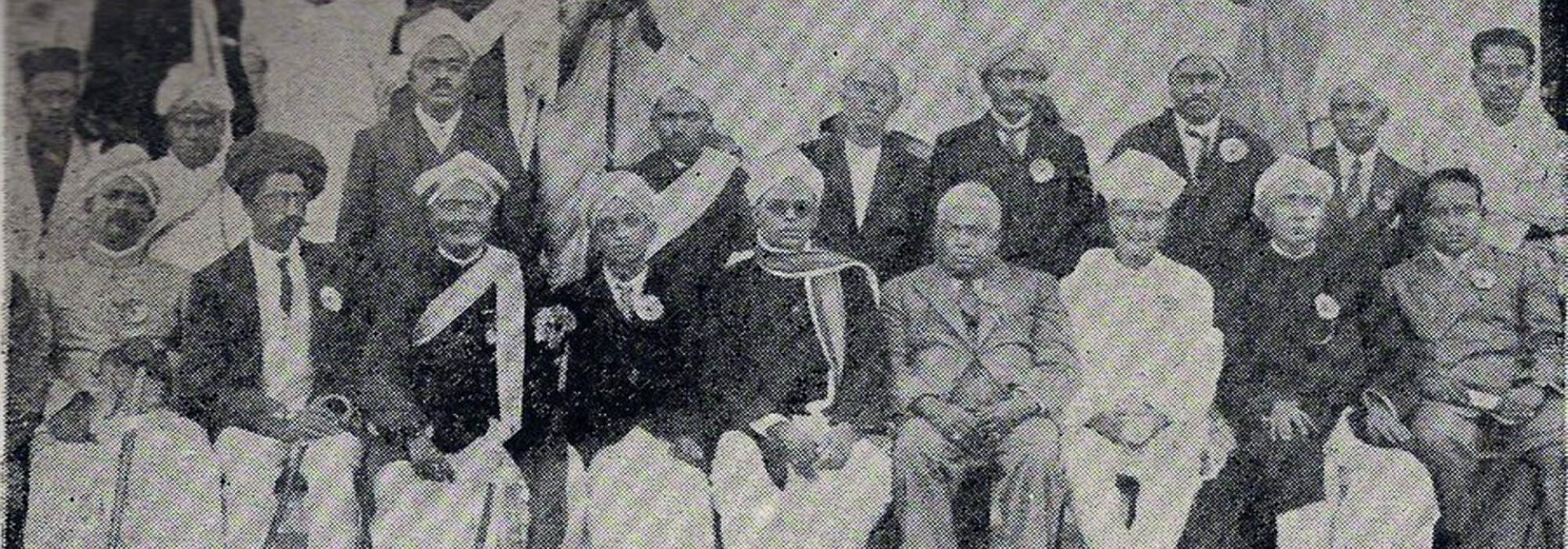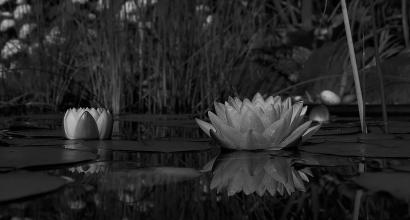We know that in December 1919, the Mysore People’s Convention, a citizens’ initiative, met in Bangalore. Among the members who came to attend the meeting, around seven or eight of them stayed in the house of sub-judge Lakshminarayanappa, who lived on Hardinge Road, Shankarapuram. This crowd included M Venkatakrishnayya from Mysore, Srinivasaraya, Vasudevaraya, and Narasingaraya from Chikkamagalur, along with a few others. After the proceedings of the convention on the first day, everyone happily returned to their respective places; likewise the gentlemen whom I’ve alluded to also returned, to Lakshminarayanappa’s house, and were resting after dinner. It might have been around midnight; there was a knock on the door. Lakshminarayanappa generally slept in the veranda in the first floor, which is towards the road. He routinely went to bed at 9 pm, but used to wake up by around 11 pm or 11:30 pm after a round of sleep. When he heard the knock, he asked, “Who’s there?”
“It’s me. Krishna,” a familiar voice replied.
Although he couldn’t recognize the voice at once, since it sounded familiar, he turned on the lights, came down, and opened the door. It was Attikuppe Krishnashastri.
“Why so late?”
“I’d gone to a relative’s house for dinner. It took a lot of time. They insisted that I sleep at their place. But I had something important to discuss with you here, so I came. I’m sorry for the inconvenience caused.”
Even though his speech was filled with courtesy, his face betrayed mischief. Lakshminarayanappa being a fun-loving person, anticipating some prank, said without much ado, “It’s good you came back even though it’s late. The bed is ready upstairs, you can sleep.” He went to his room and closed the door. Krishnashastri followed him upstairs, made his bed, turned off the lights and feigned sleep uttering the words “Rama, Rāma!” After a few minutes, assuming that Lakshminarayanappa was fast asleep, Krishnashastri turned on the lights and made a note of who all were sleeping in the hall and in which position. He sat near one of the beds, opened one of the many packets of eatables he had secretly brought, broke a small piece of Doodhpeda and placed it inside the mouth of Srinivasaraya who was in deep sleep.
His mouth being devoid of teeth, the Doodhpeda directly reached his tongue. Srinivasaraya woke up with a start screaming, “Who is that?”
Krishnashastri replied, “It’s me, Maddu!”
Madhavaraya alias “Maddu” was the son of Srinivasaraya. Raya sat up laughing.
Shastri then placed a piece of Jahangiri in the unsuspecting mouth of Venkatakrishnayya who was sleeping nearby and continued the same by placing a piece of Chakkuli between the lips of Narasingaraya. Everyone woke up surprised exclaiming, “What’s this!” and observed four huge packets filled with eatables lying in front of them. Seeing Krishnashastri they asked, “What’s this, so late in the night?”
“Please indulge, respected sirs, I got these just for you. They are so tasty I couldn’t eat them without sharing it with you all!” Hearing the din from the next room even Lakshminarayanappa joined the party.
Food and chit-chat went on until two in the morning. Meanwhile Krishnashastri brought out a garland and a sandalwood box from his pocket. Seeing that, Srinivasaraya asked, “Where had you been? Whose head had this garland adorned before?”
“Wherever it was, why would he reveal it if you ask?” Lakshminarayanappa retorted.
Krishnashastri replied, “You’re all experienced folk; do you think I’ve done something which you all haven’t done before?”
Thus the chit-chat, punctuated with peals of laughter, continued till dawn.
As a resident of the same neighbourhood, I happened to make a casual visit to Lakshminarayanappa’s place the next day and got to know everything that had transpired the previous night. I was feeling a bit jealous having been left out; I asked Krishnashastri, “Why didn’t you call me?”
He replied, “They all felt that you’re still a kid and hence not matured enough. If you were here, all of them would’ve been slightly uncomfortable to discuss the details of their escapades. You’re still a bit of a prude. To be part of this crowd you might have to gain some more maturity.”
The truth was, I wasn’t as prudish as it was made to be; however, I can’t claim I could beat the likes of Krishnashastri when it came to things like this.
The aforementioned episode is just one example of the personality of Krishnashastri. He was an extremely friendly soul. A rasika. Handsome. Not very tall, not very short. He had put on some weight after reaching middle age. Fair complexion. Always smiling. In sum, a charming personality. With a voice neither shrill nor baritone, his pronunciation was impeccable. He was a serious student of literature and music. I’ve heard that he was even a part of some theatre group.
Krishnashastri had been a member of the Citizens Representative Assembly for a long time. He was well-informed and insightful when it came to public affairs. He was a loyal and efficient worker. He was a gazetteer. He used to study government documents and authentic sources thoroughly and extensively, discuss with experts, make things extremely clear, and with that clarity he used to present his opinions in the assembly. For this reason everyone was always curious to know his opinions.
His style of speaking was even more interesting than the content. He was an expert in both Kannada and Sanskrit, and was a humorist by nature. Endowed with these pleasing qualities, his speeches were always filled with an unchecked flow of words, clarity in meaning and rich in humour.
During Sir M. Vishveshwaraiah’s tenure as the divan of Mysore State, one day there was a serious discussion in the assembly. Some government department had been slow in implementing an important initiative. The members were reprimanding the government with caustic words. The replies given by officers were also quite arrogant. Amidst all this confusion, Krishnashastri stood up asked the permission of the Speaker of the Assembly (i.e the divan) to speak. With the divan’s permission, Krishnashastri started. He took up the story of Mahāśvetā from the renowened Sanskrit prose work Kādambarī of Bāṇabhaṭṭa where she is waiting for Puṇḍarīka and surmising all possible reasons as to why he might have been late; Shastri then began singing it in the style of gamaka. He switched between the rāgas Ārabhī, Bhairavī, and Kalyāṇī, singing in each of them for about two minutes.
Speaker: The member is going out of topic!
Krishnashastri: That, my lord, is the reason for the delay!
Speaker: You are singing! Krishnashastri: No, this isn’t a song. It is speech. It is just another style of putting forth my opinion.
Speaker: This will cause delay in the proceedings.
Krishnashastri: I’ll stop if the assembly says so! Members: Let it continue. This is nice. Let us give him more time.
The assembly members began laughing, and soon the Speaker joined as well. After the laughter subsided, the Speaker said, “Next Subject.” By then, the anger had subsided and everyone had already forgotten the objections.
During one of the meetings of the representative assembly when the erstwhile divan Sir Albion Rajkumar Banerjee was presiding, the Governor of Madras, Lord Willingdon was curious to see the proceedings. He attended the meeting along with his wife. To showcase the best orators the assembly could boast of, the divan decided that Venkateshayya from Hassan would speak in English and Krishnashastri would speak in Kannada. And so, those two members spoke about the topic of the day for ten minutes each. Krishnashastri, in his epilogue saluted the Willingdon couple for coming to the assembly, and in a flash, took out a garland from his pocket and garlanded Lady Willingdon to the surprise of all. She looked pleasantly surprised at this gesture. But more than that was the humour generated when the other members showered a flurry of taunts upon Krishnashastri.
Krishnashastri was always an active and enthusiastic participant of the Mysore People’s Convention, which I alluded to in the beginning. When the assembly had met once, Sri A R Nageshwara Iyer proposed to oppose the The Mysore Newspaper Regulation Act of 1908. Krishnashastri seconded it with his usual enthusiasm and wit. Here is a summary:
“I have now obtained an opportunity to atone for my past sin. I am grateful to the assembly for providing me this chance. In the past I had committed the sin of supporting this act when it was passed. I had done that then because of the faith I had reposed in the previous divan. I thought he was an immensely capable man and assumed that what he did was correct. But now he himself has taken a U-turn. Divan Sri V P Madhav Rao, during his recent trip to England has stated that the Newspapers Act was brought into force due to the excessive pressure of the British officers and not of his own accord, and that he was not in support of it. So if the tutor himself changes his track, would it be right if the disciple doesn’t follow him? Therefore, now, I would like to atone for my past sin and I stand in front of you all to accept my previous mistake. This act should be repealed and for that to happen, it needs to be opposed.”
The assembly accepted this unanimously to the happiness of one and all.
Attikuppe Krishnashastri was always sympathetic to people in trouble. He was helpful by his very nature. He was also a good orator. He was capable of attracting the attention of the people towards public affairs and institutions.
This is an English translation of the eighteenth chapter of D V Gundappa’s Jnapakachitrashaale (Volume 1) – Sahiti Sajjana Sarvajanikaru. DVG wrote this series in the early 1950s. Edited by Hari Ravikumar.











































